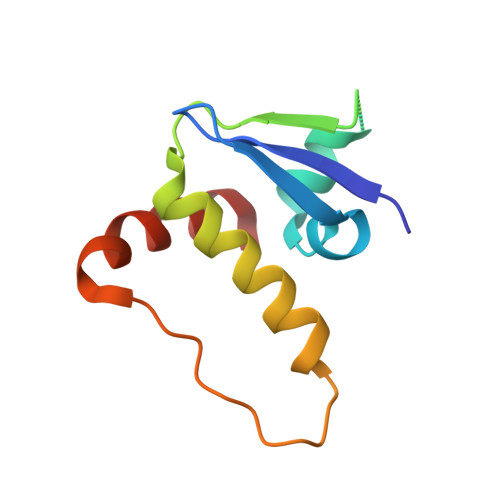Stereochemical inversion at a 1,4-cyclohexyl PROTAC linker fine-tunes conformation and binding affinity.
Pierri, M., Liu, X., Kroupova, A., Rutter, Z., Hallatt, A.J., Ciulli, A.(2024) Bioorg Med Chem Lett 110: 129861-129861
- PubMed: 38942127
- DOI: https://doi.org/10.1016/j.bmcl.2024.129861
- Primary Citation of Related Structures:
9EQJ, 9EQM - PubMed Abstract:
Proteolysis targeting chimeras (PROTACs) are heterobifunctional small-molecule degraders made of a linker connecting a target-binding moiety to a ubiquitin E3 ligase-binding moiety. The linker unit is known to influence the physicochemical and pharmacokinetic properties of PROTACs, as well as the properties of ternary complexes, in turn impacting on their degradation activity in cells and in vivo. Our LRRK2 PROTAC XL01126, bearing a trans-cyclohexyl group in the linker, is a better and more cooperative degrader than its corresponding cis- analogue despite its much weaker binary binding affinities. Here, we investigate how this subtle stereocenter alteration in the linker affects the ligand binding affinity to the E3 ligase VHL. We designed a series of molecular matched pairs, truncating from the full PROTACs down to the VHL ligand, and find that across the series the trans-cyclohexyl compounds showed consistently weaker VHL-binding affinity compared to the cis- counterparts. High-resolution co-crystal structures revealed that the trans linker exhibits a rigid stick-out conformation, while the cis linker collapses into a folded-back conformation featuring a network of intramolecular contacts and long-range interactions with VHL. These observations are noteworthy as they reveal how a single stereochemical inversion within a PROTAC linker impacts conformational rigidity and binding mode, in turn fine-tuning differentiated propensity to binary and ternary complex formation, and ultimately cellular degradation activity.
Organizational Affiliation:
Centre for Targeted Protein Degradation, School of Life Sciences, University of Dundee, 1 James Lindsay Place, DD1 5JJ Dundee, United Kingdom.

















